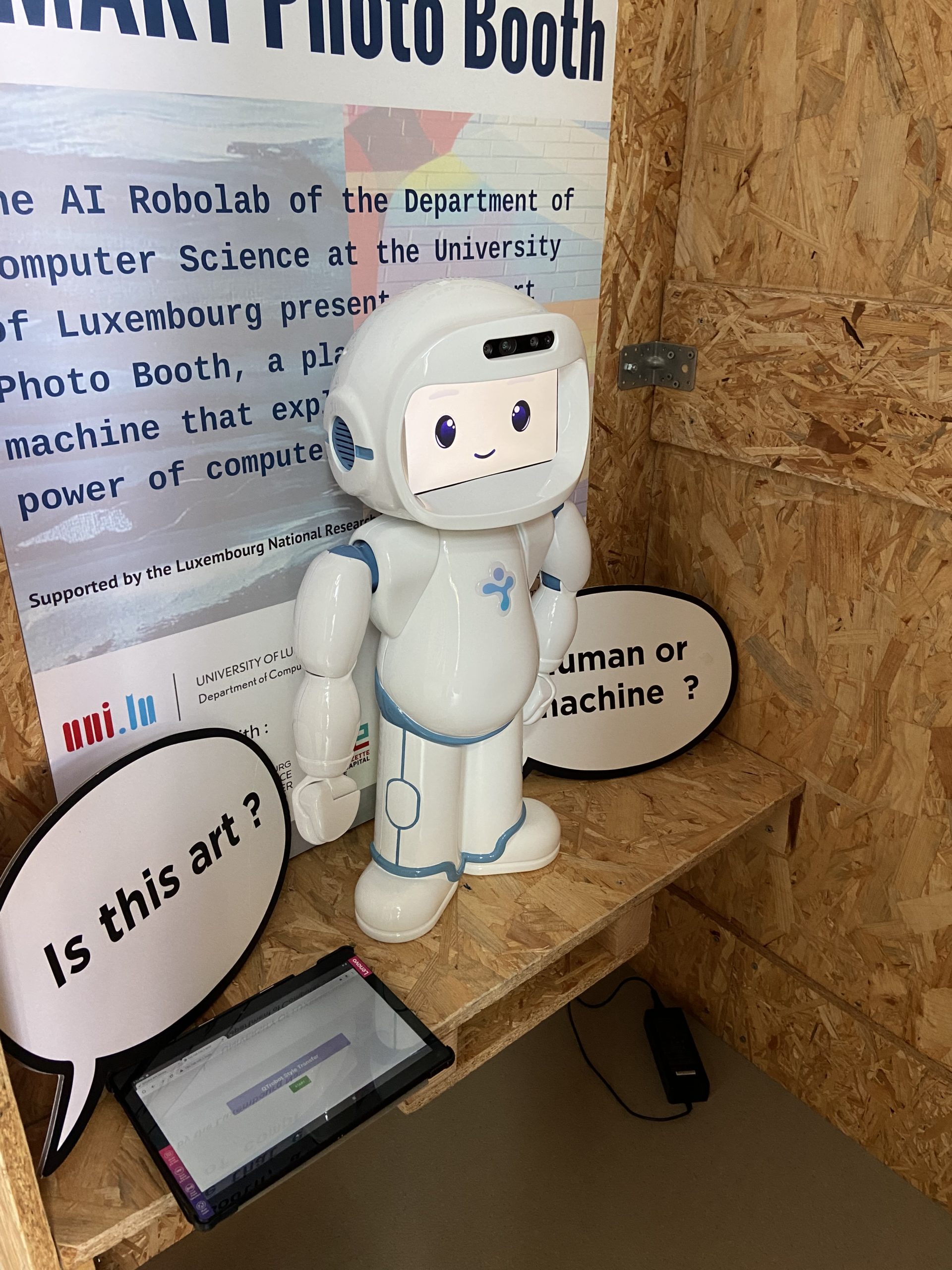ACHIEVEMENT
Artificial Intelligence (AI) is more and more present on our daily lives (often without people noticing it). There are many misconceptions about AI, and as AI researchers, it is our responsibility to initiate a dialogue with the public to discuss what AI is, where the research is going and the ethical issues it raises.
Within this project, we developed a playful and interactive Smart Photo Booth, the robot CUTIE and combined AI and Art to engage different audiences and entice them to explore computational methods.
The idea behind the Smart Photo Both is to apply AI to manipulate images to resemble artistic styles for two reasons: i) humans are very visual and drawn to images, which are a powerful media to provoke interaction and enable easy communication; ii) image manipulation and deep fakes are a good entry point to discuss the potential of AI.
Thus, the Smart Photo Booth enabled us to communicate the possibilities brought by AI and machine-learning to a wider audience, in particular teenagers, including those who are not technology drawn.
The Smart Photo Booth, CUTIE, is a QT Robot (https://luxai.com/) that was tailored to take pictures and use them as input to create new images as if they were painted by a renowned artist. The software makes a “style transfer”, using Generative Adversarial Networks (GAN), a design of neural networks capable of generating images and sound. The development of CUTIE was done in partnership with LuxAI, a spin-off of the University of Luxembourg. To accompany CUTIE we developed a video, in collaboration with an Art History expert, to convey to the audience a brief history of portraits and selfies and explain the machine learning and AI concepts behind CUTIE.
We worked together with the Scienteens Lab of the University of Luxembourg (https://wwwen.uni.lu/lcsb/scienteens_lab) to deliver workshops in machine learning & art for high school students. During these workshops, the students became acquainted with the main concepts of artificial intelligence, machine learning, and the style transfer algorithm. Participants were provided code, which they could experiment with. Furthermore, the technologies were placed in a larger framework and multiple examples were discussed on how it affects our daily lives. The upside of these technologies using deep neural networks was debated as well as the consequences and dangers of the possibility to generate high-quality images (e.g. deep fakes). In addition, this project was a pilot for a joint PSP-Flagship Proposal – BeCoS: Become a Computer Scientist, led by the Scienteens Lab. BeCoS aims to promote computer literacy to encourage computer science as a career path for teenagers and especially for young women. It is now part of the Computer Science program of the Scienteens Lab (https://wwwen.uni.lu/lcsb/scienteens_lab).
We also collaborated with the Luxembourg Science Center (LSC). CUTIE went to the LSC and interacted with around 100 visitors over three Saturdays. Researchers from the University of Luxembourg accompanied CUTIE and facilitated the interaction with the public. The participants really enjoyed the interaction with the robot and the opportunity to choose different art styles.
In 2022, the Smart Photo Booth was installed in the Computational Creativity Hub at the University of Luxembourg and integrated with the AI&Art Project of the Uni.lu at the Esch2022.
Collaboration
This project is a collaboration with the:


